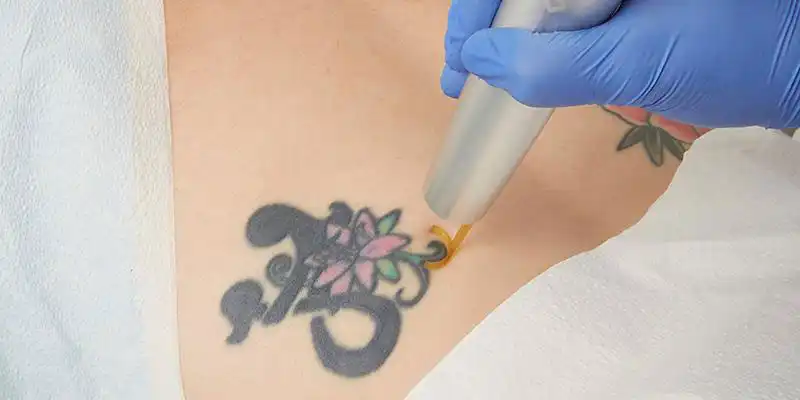Arlington Laser Tattoo Removal
Revolutionizing the Way We Remove Tattoos
The PicoWay Laser system at SkinDC is changing the landscape of tattoo removal, offering a faster, more effective solution with minimal discomfort and recovery time.

What Is PicoWay
Laser Tattoo Removal?
The PicoWay Laser is an innovative laser tattoo removal technology designed to remove tattoos more efficiently and effectively than traditional lasers. What sets PicoWay apart is its use of ultra-short picosecond (trillionth of a second) laser pulses.
The pulses shatter tattoo ink into minuscule particles that are easily eliminated by the body, making the removal process faster and more comprehensive.
This state-of-the-art laser is versatile enough to target a wide range of ink colors on various skin types, including previously hard-to-remove inks and deeper skin tones.
How Laser Tattoo Removal Works at SkinDC
Picosecond technology offers the most innovative laser tattoo removal technology.
Compared with nanosecond technology of the past, today’s ultra-fast picosecond laser removal technology offers:
- Less risk and pain
- Faster results
- Broader range of colors removed
- Fewer treatment sessions
PicoWay utilizes two laser wavelengths:
- 532nm wavelength: This first wavelength enables treatment of shallow lesions and tattoo colors such as red, yellow, and orange.
- 1064nm wavelength: The second wavelength allows for the treatment of deeper lesions and tattoo inks that are black, brown, green, blue, or purple.
Treatment is suitable for all skin types with minimal downtime. The option of dual-wavelengths also means that multi-colored tattoos can be treated, which is not usually the case with traditional tattoo removal lasers.
PicoWay Laser
Tattoo Removal Gallery


What to Expect With PicoWay
PicoWay Laser tattoo removal sessions are relatively quick, often lasting only a few minutes depending on the size and complexity of the tattoo.
Patients typically describe the sensation as similar to a rubber band snap against the skin. While discomfort levels vary, the procedure is generally less painful than getting a tattoo. For added comfort, a topical numbing cream may be applied beforehand.
Immediately following the treatment, you may notice whitening of the treated area, which is a temporary reaction. Redness, swelling, and slight tenderness are common but usually subside within a few hours to days.
Aftercare instructions will be provided, emphasizing the importance of keeping the area clean and protected from sunlight.
The number of sessions required for optimal results varies, depending on the tattoo's size, color, and age, as well as the body's response to the treatment. Sessions are typically spaced 6 – 8 weeks apart to allow the skin to heal and the body to flush away ink particles.
Most patients see significant fading after each session, with the tattoo gradually disappearing over time.
